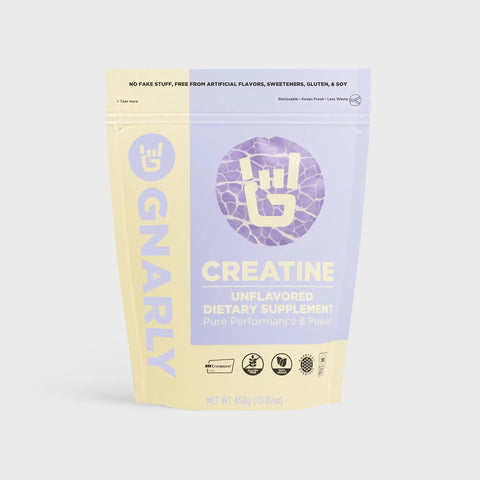The simple truth, women are different from men. From hormones to the build of their skeleton, female bodies act and move differently. At one point, these differences created a lens of a woman in sport being "against the laws of nature," as said by the man credited for establishing the modern Olympics (3). Nowadays, we know how capable women are in sports, and the unique challenges lady-crushers face.
Injuries are a part of life and an integral part of sports. Managing training and lifestyle behaviors for lady crushers is essential to playing long and hard, pain and injury-free! Female athletes face unique sex-related problems like injury risk; bone stress injuries and ACL tears have topped the list. Although these injuries are also sustained by men, women meet the face of these substantial injuries more frequently than their male counterparts (6, 9).

Sex-Differences
Why is this? Differences between sexes start with the absence of a Y chromosome, leading to physical differences that allow women to bring life into this world (10). For the purpose of this article, biological factors define sex differences. In contrast, gender is associated with a life experience (11). Hormonal sex differences, specifically production and distribution, contribute to how likely an injury could occur. Estrogen is a crucial hormone produced during the menstrual cycle that impacts joint flexibility and collagen. In the luteal phase of the menstrual cycle - leading up to a woman's period - estrogen increases, leading to higher odds of excessive soreness and injuries. It's no surprise that males have higher testosterone, protecting tendons and other soft tissue (1). Testosterone also allows men to accumulate more muscle mass and absolute strength than females. Females can develop just as much strength relative to their size (7). Next, women have different bone and joint structures, paired with a lower center of gravity. Women typically have shorter arms and legs; these differences give women an advantage in sports that require balance and body control (7). A wider pelvis, which impacts walking gait, is another structural difference in females (7). Injuries are typically sport-related, not sex-related. Specific injuries are more common in female athletes because of the differences between men and women (7).
ACL Injuries
Injuries can ruin short- and long-term goals in the blink of an eye. The most common injury within female athletes involves the Anterior Cruciate Ligament (ACL) (13). ACL injuries are often caused by a direct impact on a specific body area.
Female athletes face ACL tears by two- to eight-fold more than males (3). The ACL plays a significant role in stabilizing the knee during lower body explosive movements, like cutting and jumping. Due to its function, ACL injuries typically occur during rapid direction changes, landing incorrectly, or stopping suddenly (1). These injuries are more common in lady athletes, placing the knee in a vulnerable state, commonly needing surgery and rehabilitation. It's believed that physical differences account for higher injuries in female athletes. Females with a limited hip range of motion place higher stress on the knees, whereas hip strength is also critical during explosive lower-body movements. Maintaining strength and mobility of the hip abductor and extensor muscles can help prevent this type of injury from arising (13).
Females tend to be quad-dominant, unintentionally prioritizing these muscles while moving. Hamstring-focused resistance training leads to athletes with a better quad-to-hamstring strength ratio, making the knee less vulnerable to these injuries (6). Prioritizing neuromuscular training enhancing the connection between muscles and nerves within the core and leg stabilizers can further help females control their mid-to-lower body during their sports. As mentioned earlier, women need to know how their cycle impacts joint laxity. Approaching menstruation, the increasing estrogen contributes less protection for the knees (7). Preventing ACL tears starts from the ground up, so don't forget to train in good shoes and practice proper landing mechanics to encourage safe body positioning (12).

Bone Stress Injuries
If you're a runner, you've likely heard about shin splints and other types of bone stress injuries (BSI). BSI or Stress fractures are overuse injuries that can happen to healthy athletes and worsen over time due to cumulative micro-injuries from training stress. Although these injuries can happen at any part of the body, female long-distance runners, track athletes, and dance athletes are more vulnerable to encounter the more frequent lower body BSI (6). Their risk is twice as high as men's (7, 14). Lower-body stress injuries, like shin splints, usually begin with low-level pain and worsen with exercise. Recovering from stress fractures requires time off, but an athlete may need surgery (7). A significant jump in training in a short amount of time is the most critical risk factor for many overuse injuries, including bone stress injuries (8).
Any athlete can benefit from weight training, which places healthy stress on the bones and increases bone mineral density. Building strong bones throughout one's life, especially as a woman, is protective of these types of injuries along with injuries due to sudden trauma, like falling. These injuries have also been linked to poor vitamin D intake. Vitamin D is a micronutrient that allows our bodies to absorb calcium, which is essential for bone health effectively. It's common knowledge that the calcium in milk helps with solid bones. Still, there's a reason why grocery store milk is fortified with vitamin D (8)! Overall, athletes need to balance training, recovery, and nutrition. Athletes challenged to maintain this "training equilibrium" can develop stress fractures or sudden injuries and impact their hormones, causing long-term and even irreversible damage.
Irregular Periods & Undereating
Growing up in sports, I remember hearing that it was normal for athletes to lose their period. Socially, irregular menstrual cycles and amenorrhea - not having a period - were preached as part of the high-level female athlete experience. This is false. Having a period is normal; not having one is a red flag. All athletes and coaches need to know that it's not normal to have irregular periods or lose them altogether, signaling the need to see a physician (10).
First, if your period is unstable, you're more likely to develop injuries due to stress fractures and overuse (7). An athlete can encourage a stable menstrual cycle by properly fueling and eating enough. There is misinformation around how much calories should/shouldn't be consumed, for example, the myth circling social media regarding the 1,200 calories per day "recommendation." In a world with constant pressure to look a certain way, significantly as athletes, it contributes to troublesome body image and disordered eating in sports. Undereating is linked to irregular menstrual cycles and elevated injury risk. Undereating can be referred to as inadequate energy intake, AKA you're not eating enough calories to fuel what you do on a day-to-day basis (9).
For the females in the back, inadequate energy intake for sports demands dramatically increases this risk and could lead to irreversible bone damage.
The Female Athlete Triad & RED-S
The Female Athlete Triad demonstrates the relationship between energy availability or calorie intake, irregular periods, and its impact on bone health. Relative Energy Deficiency in Sport is the updated label for the “Female Athlete Triad.” Classifying this as “RED-S” opens up the diagnosis for male athletes. It encompasses a broader range of symptoms beyond the trio of disordered eating, menstrual dysfunction, and low bone density. When athletes burn more calories than they are consuming for an extended length of time, their physiology reacts by influencing metabolism, menstrual cycle, bone mineral density, immune system, protein synthesis, cardiovascular health, and influences the athletes’ health in the short term and long term (2).

Prevention Considerations
Getting a grasp on what your cycle looks like can empower individuals to know when it’s appropriate to train hard and recover. Lastly, eating enough to fuel your training and sport is essential for strong muscles, bones, and a regular menstrual cycle. Paired with eating enough calories, consuming enough protein, and supplementing with creatine can help athletes accomplish strength gains, better recovery, and prevent injuries (5).
Females at all levels should consider creating a well-rounded athletic base with training and fueling that prevents sudden and gradual injuries…
- Track your menstrual cycle and talk to your doctor if it’s irregular or absent
- Prioritize gradual training increases (remember the 10% rule!), lower body strength training, and proper landing mechanics
- Consume a well-balanced diet with enough calcium and vitamin D that meets the energy needs of your sport
- Consider connecting with a registered dietitian, sport-specific coach, and or doctor if you’re concerned with your risk for overtraining or sudden impact injuries.
- Abate, M., Vanni, D., & Pantalone, A., (2013). Mechanisms of anterior cruciate ligament injuries in female athletes: a narrative review. Journal of Orthopedics, 5(1), 27-34.
- Boden, B. P., Sheehan, F. T., Torg, J. S., & Hewett, T. E. (2010). Noncontact anterior cruciate ligament injuries: mechanisms and risk factors. The Journal of the American Academy of Orthopaedic Surgeons, 18(9), 520–527.
- Drinkwater BL, editor. Women in sport. Malden (MA): Blackwell Publishing; 2000.
- Hall, M., Manetta, E., & Tupper, K. (2021). Creatine Supplementation: An Update. Current Sports Medicine Reports, 20(7), 338-344.
- Hannah, R., Folland, J., Smith, S., & Minshull, C., (2015). Explosive hamstrings-to-quadriceps force ratio of males versus females. European Journal of Applied Physiology, 115(4), 837-847.
- Ivković, A., Franić, M., Bojanić, I., & Pećina, M. (2007). Overuse injuries in female athletes. Croatian medical journal, 48(6), 767–778.
- Knechtle, B., Jastrzębski, Z., Hill, L., & Nikolaidis, P. T. (2021). Vitamin D and Stress Fractures in Sport: Preventive and Therapeutic Measures—A Narrative Review. Medicina, 57(3), 223.
- Mountjoy, M., Sundgot-Borgen, J., Burke, L., Carter, S., Constantini, N., Lebrun, C., ... & Ljungqvist, A. (2014). The IOC consensus statement: beyond the female athlete triad—relative energy deficiency in sport (RED-S). British journal of sports medicine, 48(7), 491-497.
- Lin, C. Y., Casey, E., Herman, D. C., Katz, N., & Tenforde, A. S. (2018). Sex Differences in Common Sports Injuries. PM & R : the journal of injury, function, and rehabilitation, 10(10), 1073–1082.
- Regitz-Zagrosek V. (2012). Sex and gender differences in health. Science & Society Series on Sex and Science. EMBO reports, 13(7), 596–603. https://doi.org/10.1038/embor.2012.87
- Sasaki, S., Nagano, Y., Kaneko, S., Imamura, S., Koabayshi, T., & Fukubayashi, T. (2015). The relationships between the center of mass position and the trunk, hip, and knee kinematics in the sagittal plane: a pilot study on field-based video analysis for female soccer players. Journal of human kinetics, 45, 71–80.
- Szczesniak, C. L. (2019). The Factors Affecting Anterior Cruciate Ligament Tears in Female Athletes: A Synthesis of the Research Literature.
- Tenforde AS, Nattiv A, Barrack MT, et al. Distribution of bone stress injuries in elite male and female collegiate endurance runners. Med Sci Sports Exerc. 2015;47(5 suppl):905.
- Tenforde, A. S., Carlson, J. L., Chang, A., Sainani, K. L., Shultz, R., Kim, J. H., ... & Fredericson, M. (2017). Association of the female athlete triad risk assessment stratification to the development of bone stress injuries in collegiate athletes. The American journal of sports medicine, 45(2), 302-310.





